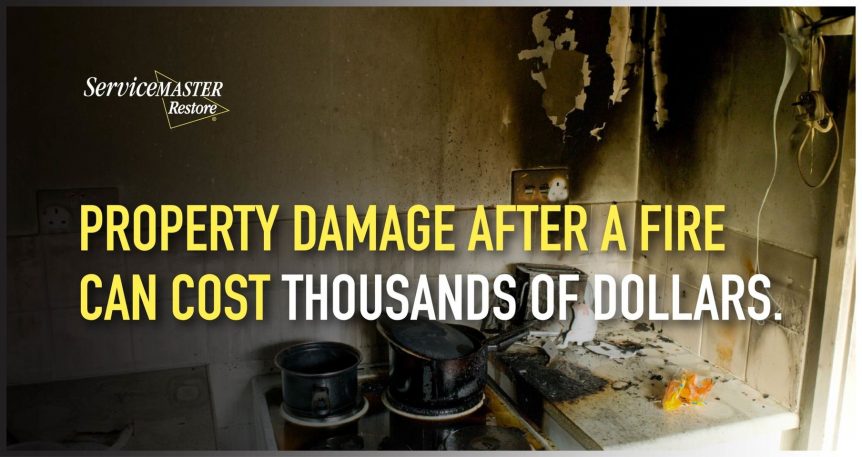Gas-related fires are not uncommon in US households. Natural gas contributes to more than half of all gas fires in the nation. When confronted with a gas fire, the best method of extinguishment is to smother the flames. Here are steps to put out a manageable gas fire.
What causes a gas fire?
Gas fires are caused by everyday household activities, such as cooking on a gas stove, running a water heater, or grilling. Propane is frequently used as a fuel to heat homes. If a stealthy gas leak occurs, even a small spark can set off a blazing eruption of fire.
How common are gas fires?
About 60 percent of American households rely on natural gas, per the US Energy Information Administration. It’s no surprise that fire departments respond to more than 3,000 gas-related fire incidents each year. Natural gas comprises around 2,000 of these cases.
Why is natural gas deadly?
Gas in its natural form is odorless and colorless, making its detection difficult. But gas companies add a sulfuric scent similar to rotten eggs to help homeowners identify gas, should a leak occur. When homeowners smell gas, action must be taken immediately to prevent a fire incident.
What are the steps to put out a natural gas fire?
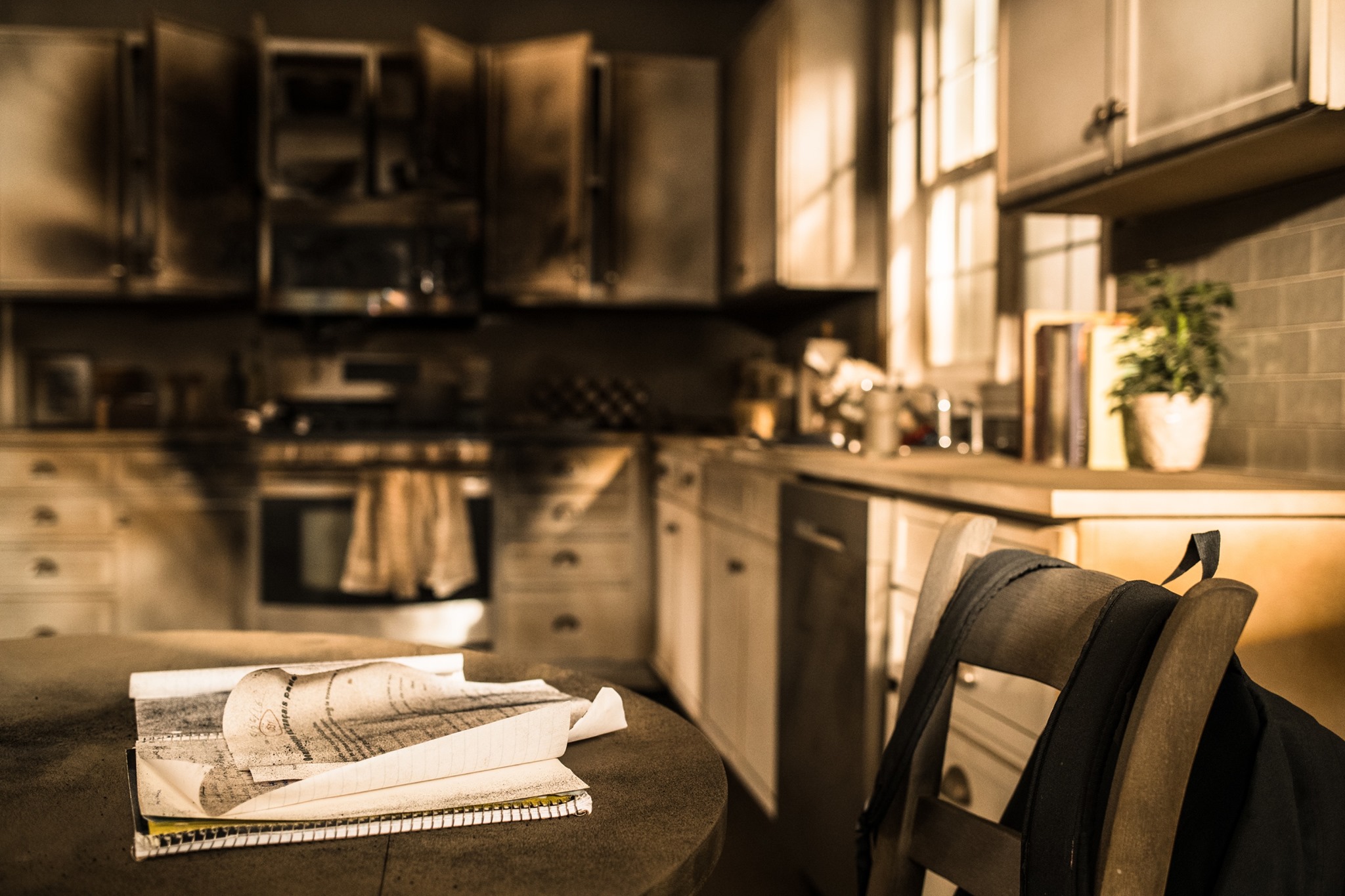
1. Shut off the gas supply
When a natural gas fire occurs, like on a gas stovetop, the first step is to shut off the gas supply by turning the appliance’s shut-off knob. Stopping the gas supply keeps it from fueling the fire. If turning off the knob requires risking contact with the fire, don’t proceed.
Do not attempt to shut off gas valves if gas leaks from a broken gas line. Trying to do so will not stop the gas from continuing to leak. In this situation, call 911, the local gas company, or the fire department to notify them of the gas leak emergency.
A natural gas leak is a risk for an explosion. Due to this reason, homeowners must evacuate everyone from the property. Move people and pets far away from the home. Let the experienced fire officials put out the fire and utility company technicians safely stop the leak.
2. Use a Class B fire extinguisher
Smother flames from a manageable stovetop fire with a Class B fire extinguisher that’s designed to put out gas fires. Do not throw water on the fire, as it can worsen the situation. Do not turn on the stove again until the utility company deems it safe to do so.
What are the steps to put out a gas fire on a grill?
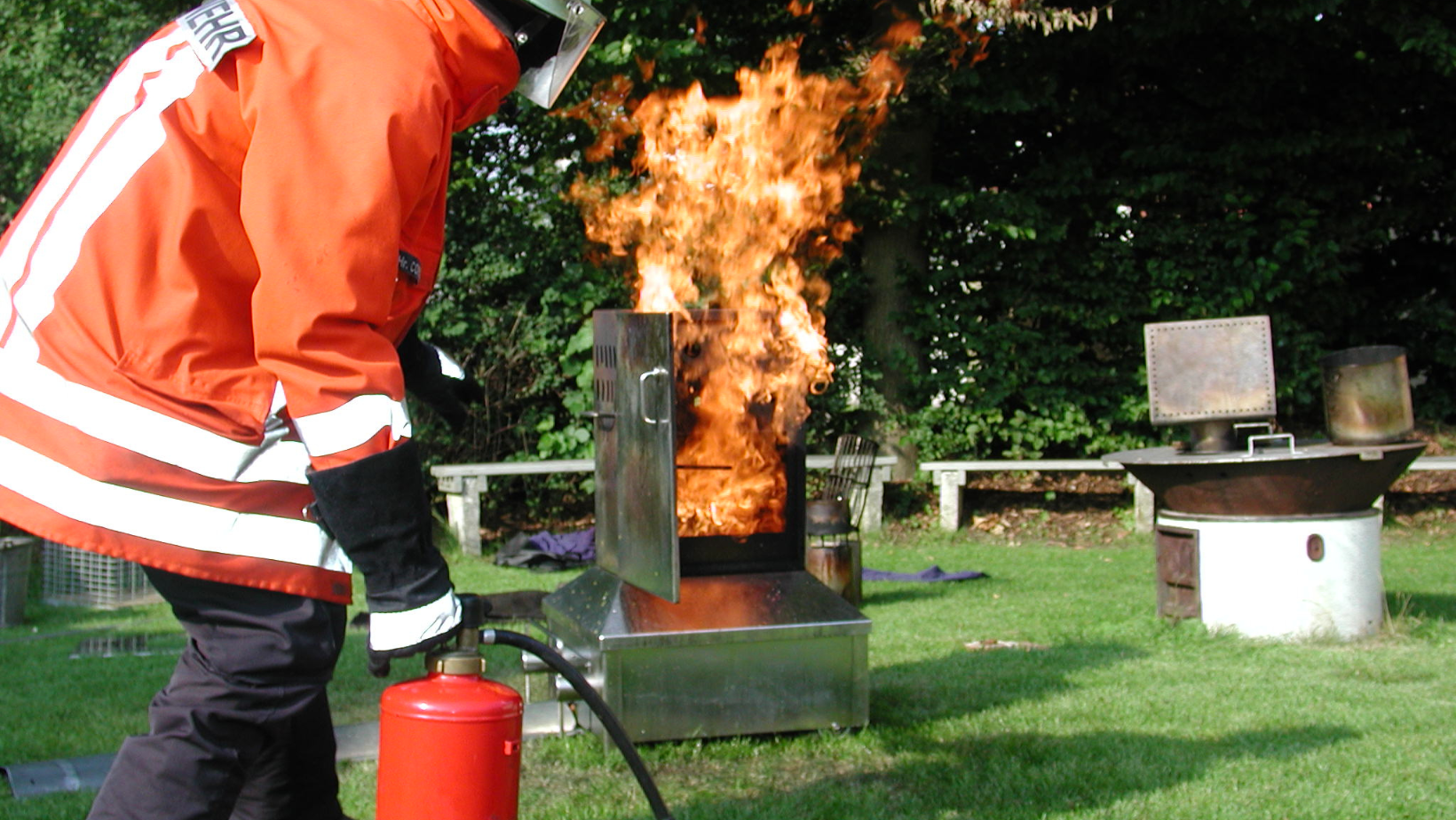
1. Turn off the gas supply
If a fire erupts on a grill that operates on gas, turn off the burners to stop fueling the flames. Turning off the burners may be unsafe if the fire rages uncontrollably; in this case, shut off the gas supply directly by twisting the levers on the propane tank.
2. Smother the fire
Use a fire extinguisher to smother the flames. If one is not handy, pour baking soda, salt or sand over the fire. Starve the fire of oxygen by closing the grill’s lid and vents. If the fire expands or approaches the gas tank, evacuate the area immediately and call 911.
What are the steps to put out a gasoline fire?
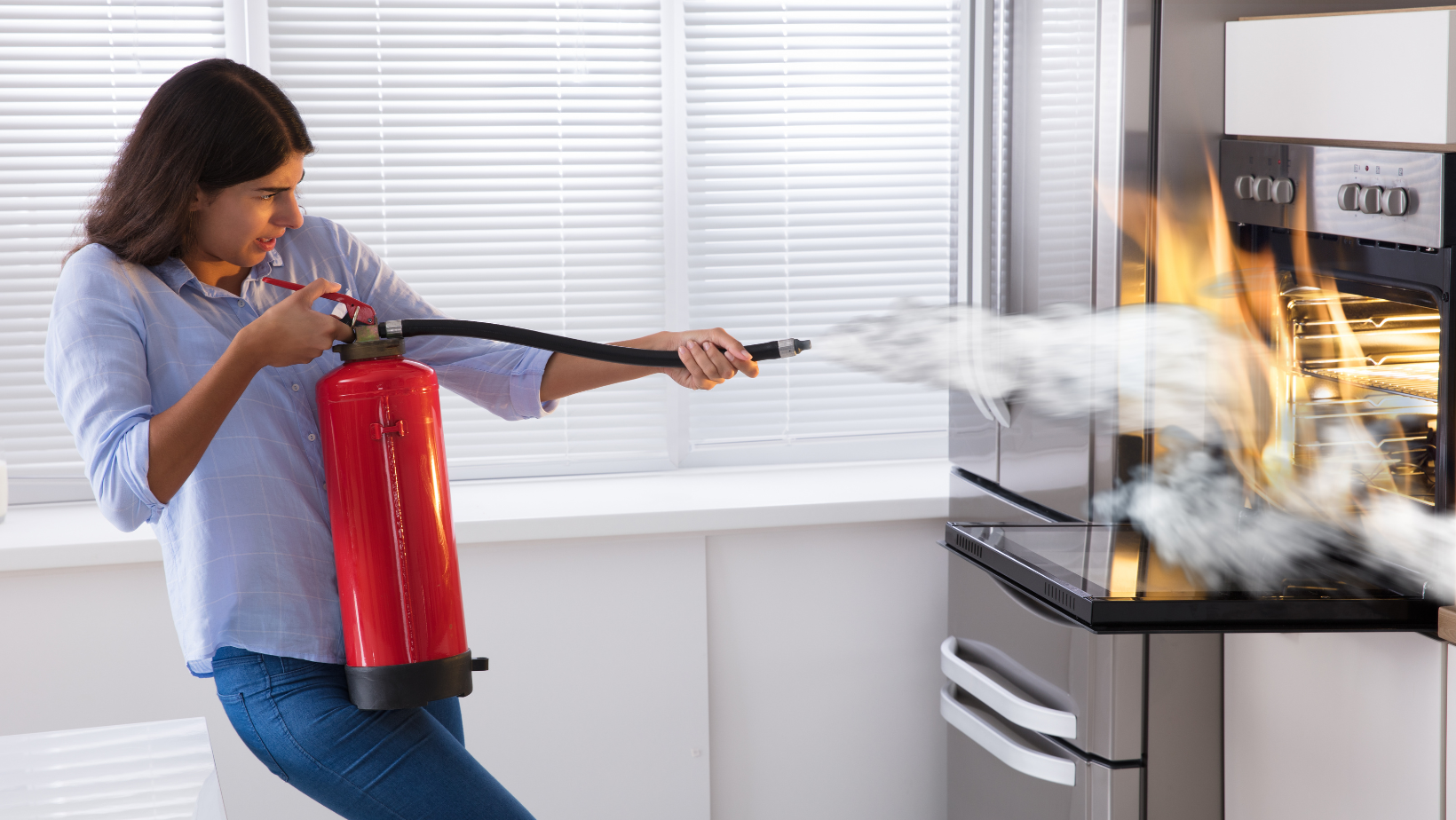
1. Suffocate it with a fire blanket
When a gasoline fire occurs, evacuate the area. Increase ventilation in the enclosed space by opening the windows. If the fire is small, throw a fire blanket over the flames. On the other hand, if the gas fire is large, use a fire extinguisher to squash the flames.
2. Spray it with a fire extinguisher
Any of three types of fire extinguishers may be used to put out a gasoline fire. A fire extinguisher that relies on chemical powder is effective as it suppresses the fire’s chemical reaction. A CO2 extinguisher uses carbon dioxide to suffocate the flames. Foam-based extinguishers can also be used.
How are gas fires prevented?
Homeowners can take steps to reduce the risk of a gas fire erupting. Keep combustible materials away from appliances that utilize gas, such as furnaces and water heaters. Install natural gas detectors in the home and ensure they are placed in areas where people can hear the alarms.
Prevent gas fires by wiping down the grill after each use; food can serve as a fuel for grill fires. During grilling season, thoroughly clean the grill once monthly. Keep the grill in a safe location, which is at least five feet away from combustible materials (siding, deck, and furniture).
A gas fire can erupt without notice. It’s best to be prepared with a Class B fire extinguisher. But when a gas fire causes major damage to the home, consult the fire damage restoration experts at ServiceMaster DRR. Our crews are equipped to restore your property quickly and efficiently.
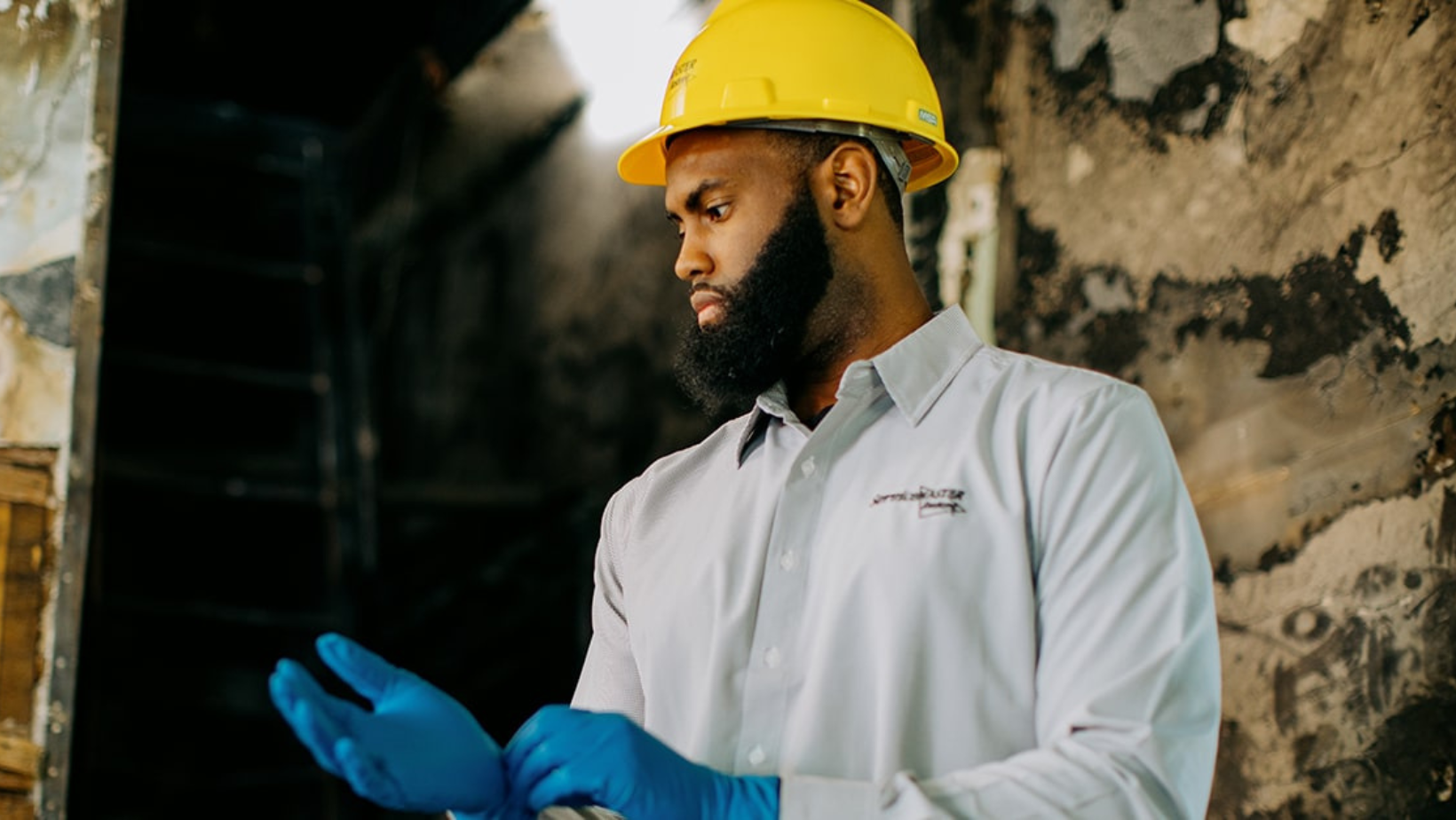
Fire damage cleanup technicians arrive at your location promptly after your call to assess the extent of damage. We secure the fire-damaged building to prevent collapse. Our specialists then begin cleaning the existing soot and smoke to return the property to its pre-loss condition.
ServiceMaster DRR technicians are licensed and insured to give homeowners maximum peace of mind. We’re prepared to restore both residential properties and commercial businesses that have undergone fire damage of any size and severity. Crews update property owners at each stage of the restoration.
Do not delay consulting our fire damage pros when the flames erupt. Soot and smoke damage spread rapidly without professional intervention. These byproducts of fire can leave permanent damage, like etching, if not cleaned up immediately. Smoke odors are also unpleasant and reduce air quality.
Fast action after a fire damage event is advised to ensure the best possible restoration results. ServiceMaster DRR technicians stand by to respond immediately to fire damage emergencies in San Francisco, California, and the Bay Area. Call us for quality restoration as soon as you face fire damage.

Steve VanDenBerg is the owner of ServiceMaster Disaster Restoration and Recovery. He has over 30 years of experience working within the restoration industry and successfully leading start-ups, turnarounds, acquisitions and mergers, and rapidly growing companies.
Steve earned his BS in Business & Accounting from Calvin University in Grand Rapids, MI and began working for DSI Holdings as their Chief Financial Officer. When Steve began with DSI Holdings, they were running an underperforming ServiceMaster Restore franchise with one location. Steve implemented new policies and procedures for accounting and finance as well as a professional sales plan that increased profits eightfold over his time as the CFO. He was then promoted to President and CEO and in this time, he expanded the company from two locations with $4M in sales to 12 locations and $45M in sales. DSI Holdings became one of the largest disaster restoration companies in the U.S. and helped with major restoration projects throughout the U.S. and around the world.
Steve purchased ServiceMaster DRR in 2015 when the business was in decline. Drawing on his years of experience in turning around struggling ServiceMaster franchises, Steve overhauled our operations, including finance, sales, and marketing, which led to a quick turnaround. Within Steve’s first 24 months, sales increased by 60 percent. Steve also helped greatly improve our operating margins and established a relationship with California’s largest residential insurance company. Under Steve’s leadership, we have become one of the largest disaster restoration providers in California.
Steve has found great success in turning around struggling and stagnant restoration franchises by changing the business model and strategy, greatly increasing sales and profits. Many of the changes he has implemented have even been adopted by the franchisor into their operating model.



